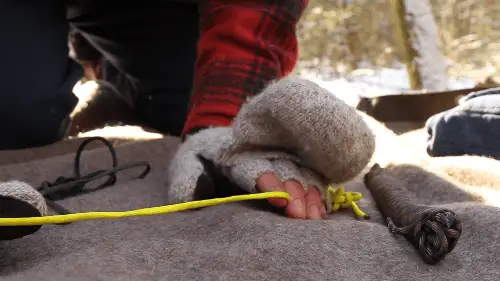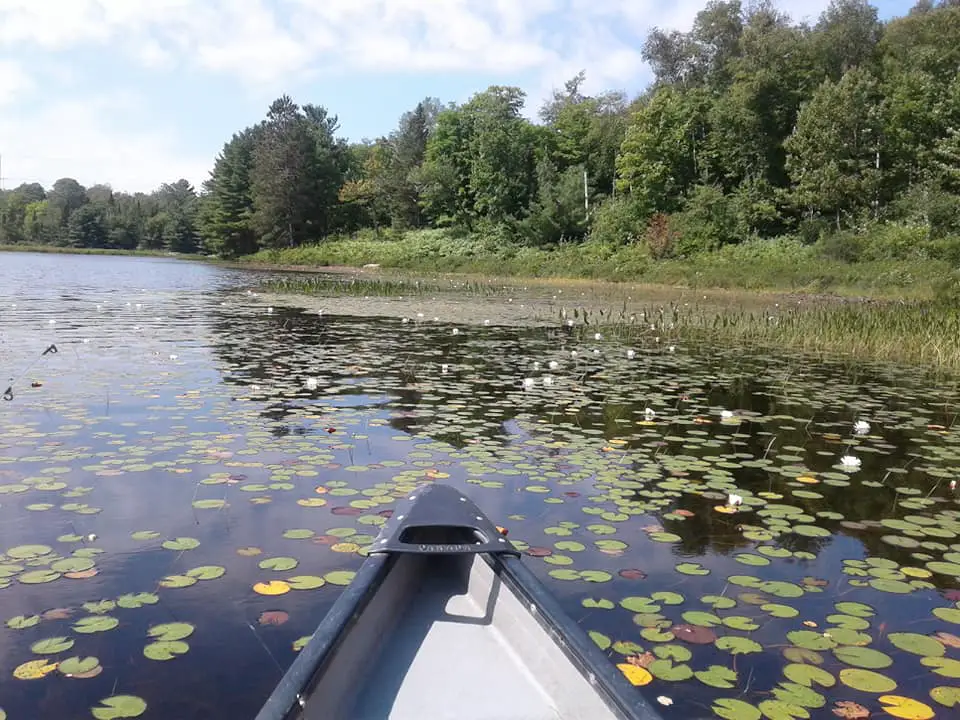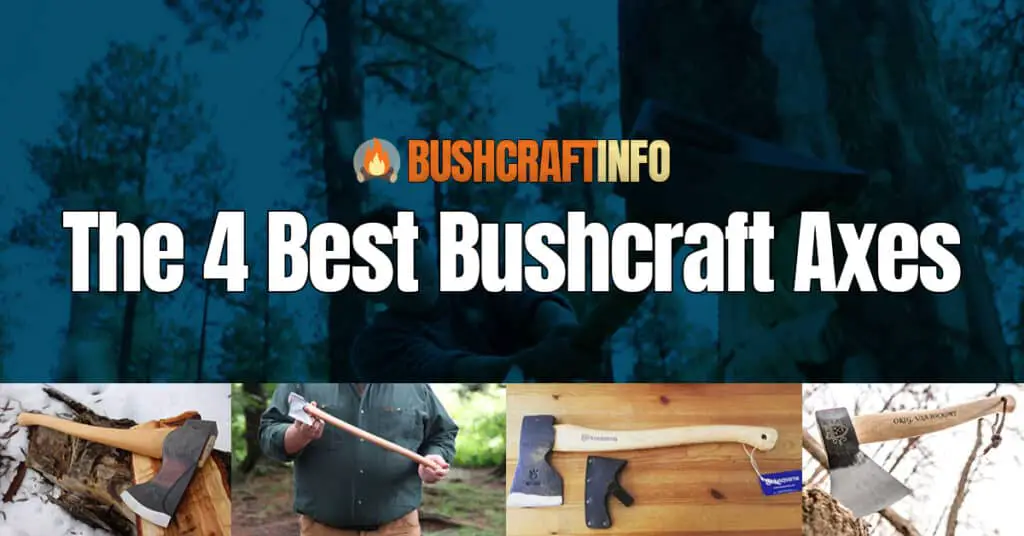If you are someone who loves adventure and is a big fan of the outdoors, chances are you have heard about paracord. In bushcraft, paracord is an essential item that all adventurers should have with them.
Oftentimes, when starting out people are stuck asking themselves questions like “what type of paracord should I buy?” & “How much paracord do I need” follow along as I provide you answers to those questions.
The best type of paracord for survival and bushcraft is 550 paracord, it’s what most people in the bushcraft community use, and for good reason. It is strong, reliable, and cheap. It is recommended that you bring a minimum of 40 feet of paracord, it is better to bring too much than to bring too little.
What Is Paracord?

To put it in simple words, a paracord is the shortened form for parachute cord. It is also known as 550 cord for its 550-pound breaking test. This lightweight nylon was originally used as the suspension line of a parachute during World War II.
Later, soldiers found hundreds of uses of this sturdy cordage, including military, climbing, and survival purposes. Paracord is known for its durability, high knot strength, and breaking strength.
In a majority of the paracords, there is an outer nylon sheath and also, several nylon filaments along with it. The type of paracord determines the number of filaments, and if they are not fixed in place, you can pull them out without much effort! It is this filament that gives paracord its appeal and the durability it needs.
Why Is Paracord So Important?
People often ask why they should choose paracord instead of plain nylon cord. This is because nylon is much more affordable. This might seem like a very relevant question. However, there’s more to this. A paracord is much more useful in comparison to nylon when it comes to survival.
It is always wiser to have a paracord as it can come in handy during a lot of situations. It personalizes your camping or adventurous trips or even simple home projects in a practical way.
From simple home chores to self-defense, the infinite number of projects and the practical applications made it a household name.
How To Determine How Much Paracord You Need?
It is very common to wonder how much of paracord do you actually need. The first thing to understand here is that the quantity of paracord depends on the usage you have in mind for it. A paracord is of great use for multiple purposes.
Firstly, there is no definite answer to this question. Several factors, including the project you are working on, its size, design, pattern, etc. influence the amount of paracord required.
Here’s a simple example. If your main purpose of buying paracord is to stash it in the backpack for survival needs, then you can opt for one that is about 250 feet in length. This much length of the paracord should be enough for two times to survive in the wilderness.
Also if you are looking to make bushcraft paracord bracelets, the general estimation for paracord bracelets is that one foot of paracord for one inch of the bracelet. So, if you have large wrists or are planning to make wide bracelets, this can vary for you. Also, if you are applying a smaller diameter cord, the general rule won’t work.
For bracelets with a simple design like cobra weaves or two-core fishtail, the paracord required would be approximately 6-8 ft. For wider or thicker design, 10-14 ft is the perfect estimation.
When it comes to the belt, which is longer and broader than bracelets, you need a relatively larger amount of paracord. 120 ft is considered perfect for a double cobra belt. For survival to hive up in a bug-out-bag or hiking backpack, 250 ft of paracord is the comfortable amount that lasts for a long time.
In most cases, however, deciding on the perfect length can be quite challenging. Therefore, it is always advisable to go for a longer cord. This way, you will always have something extra to use.
What are the Uses of Paracord?
There are quite a lot of significant uses of paracord. It is definitely much more diverse than you expected! Here are the most significant ones listed out for you:
1. Shelter Building
One of the most common reasons why people carry paracord with them is for emergencies. If you are a person who loves to camp out in the forests or wilderness alone or with friends, this is certainly a much-needed asset for you.
You can use your paracord to create shelter for yourself in times of need. Be it a swamp bed, tarp shelter, or leaning roof, the cordage lets you feel safe when you sleep in the forest. If you are planning a camp trip, make sure you are carrying paracord and other necessary bushcraft tools in case of an emergency.
2. Bushcraft Furniture
Paracord can really come in handy when building bushcraft furniture. You can use paracord to help build something like a bushcraft tripod that can be used to help you prepare meals out in the wild if you are without a grill.
3. Traps and Snares
Nothing is better than the combo of trapping and bushcraft. Snare traps with paracord are ideal for trapping animals like squirrels, rabbits, chipmunks, etc. A noose is tied to a stick that is fixed firmly and stably on the ground in the snare.
The snare is designed to trap the animal by its neck. Other than the paracord, you need a knife, two ‘Y’ shaped thin twigs, and a 1-foot branch, which has a 1-inch diameter. Set your basic snare trap in a location that has good animal traffic.
The traps help you get the food you need to survive in the wilderness. It is always better to set more than one snare trap to get good results.
4. Equipment Repairs
This benefit of paracord is appreciable when it comes to everyday life and emergencies. Broken equipment like shoes, sandals, etc. can be repaired using paracord with ease. You can also repair torn clothing, replace handles and drawstring of bags, draws, doors, etc. Thus, if you are in an urgent needy situation, paracord becomes a vital element at hand that helps you immensely!
5. Fishing Line
When planning a trip, catching fish is an activity many like to pursue. If not an activity, it definitely brings out the real experience of exploration and survival in the woods. Paracord and its inner strands can help you out here. After removing the paracord’s inner strands, tie the ends of the thread into a bend knot. You can turn a 10-foot length of cord into 80 feet at 50 lb. test.
In this way, activities like bushcraft fishing or sewing become very easy. Now, toss your line out and enjoy.
Bushcraft Paracord Bracelet
A bushcraft paracord bracelet is an essential or must-go-to item for any adventurer today.
The proven uses can handle almost all sorts of situations in the wild and help you to survive. Whether it is unraveled or kept intact, paracord bracelets serve in many ways, including a tourniquet, make a fire, splint, shackle lock, mend your gear, and so many.
The Bushcraft paracord bracelet, without a doubt, is a primary raw material one should have when they are up for a camp trip into the wilderness.
Strongest Paracord
Even though it is 550 paracord or the “Type III cord,” which is used widely, there are many other types of paracord available too. For instance, the “Type IV” paracord can handle up to 750 lbs. New commercial variants began to show up in the market, mainly because of the growing popularity and buzz of 550cord.
The recommended or the best paracord for bushcraft and survival is the 550 paracord, which always stands out in the load tests and abrasion tests.
The strongest paracord is the one that is purely made from nylon. However, polyester is also considered as a better option in certain scenarios. Survival paracord has tinder strands in it and is good for crafting worn items and for repairment. Yet, it is not as ideal as the main cordage.
For all the good reasons, reflective paracord is gaining more attention among outdoor enthusiasts. The paracord-wrapped knife gives total confidence in the outdoors and saves a lot of grief.
If you are looking for a military-grade paracord, few indicators help you to identify them. If the paracord is from an original military-approved paracord manufacturer, it will consist of a single color-coded strand among the filaments indicating the manufacturer.
It is also possible to meet the military specification without the color-coded filament. It is the number of strands in the filament where a 550 cord comes with 7-9 inner strands. All these strands are made up of three twisted brands. Finally, and most importantly, look at whether the package has “Mil-Spec” or not.
The final decision on which one is the strongest depends on the purpose as well. Think about what you need the paracord for and then pick one. In this way, you can bring the ideal or best paracord for your purpose, be it for outdoors or home projects.
Is Paracord Stretchy?
Yes, paracord is designed to stretch. The original regulations of paracord (MIL-C-5040) say, paracord, under load stretches by at least 30% without breaking. Under light loads, it stretches more than you might think. You have to buy a quality paracord to get the most amazing results.
Pay for Paracord
Cheaper commercial 550cord is available in the market quite easily. If you are paying a much lesser amount, then you should check the product you are getting. If you want a genuine, functional, and guaranteed military-approved paracord, expect to pay a little bit. Then only you will get good paracord that is worth your money and expectations.
Paracord vs. Shock Cord
Is there an actual difference between the paracord and the shock cord? How is a shock cord different from a paracord? Can we use them interchangeably?
Paracord and shock cord look similar in appearance. However, both of them are different and used in entirely different applications. The shock cord is filled with a bungee cord or stretchy elastic, either natural or synthetic rubber.
We should know that the paracord is made up of non-stretch fibers. They are often used interchangeably, yet some applications weigh one over the other.
The reason why one is preferred over the other is flexibility. At least some of you would have wished your paracord to be a little flexible or softer. One common complaint against paracord is the uncomfortableness of using it, especially for children.
Paracord possesses tremendous strength making it tougher to work with in the field as well as for projects at home. This is where we have to highlight the shock cord, which has become a trending subject in the paracord world in the recent past.
Compared with the standard 550 paracords, the shock cord is smaller from 5%-25% in diameter. Other than the core difference, the shock cord is made of UV resistant Nylon Sheath and can prevent abrasion too. It is the 100% elongation, which is the most noticeable difference between the shock cord and paracord.
Shock cord will give you easier access and is more convenient in emergencies. To provide tension in semi-permanent applications, a shock cord is the best choice. There is no doubt paracord is sturdier and can be used in a wide range of applications. Yet, it fails to provide enough give when tying down often.
Similarly, the ease of using and quick access made the shock cord a great replacement, giving you a form-fitting comfort.
To Wrap It Up
We have discussed what paracord is, why it is important, the essential uses of it in everyday life, and the difference between paracord and shock cord. Now you know paracord is one of the most useful ropes on the planet for many reasons, including strength, size, and, most importantly, versatility.
So, if you are up to some DIY-ing and have a project in mind that involves paracord like, make sure you know all the necessary information you need to know about the paracord beforehand. The idea is to first analyze your requirements, then consider the other option, and lastly, make a choice that fits all the criteria perfectly.
Was this post helpful?

Hey I’m Josh! I have been practicing Bushcraft for a little over 6 years now! I Started this website to review awesome bushcraft gear that I love as well as share information I have learned along the way!


